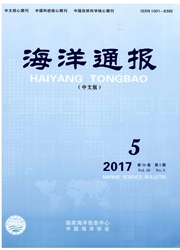

 中文摘要:
中文摘要:
根据2008年7月25-30日在江苏盐城国家级自然保护区核心区进行的滩面表层沉积物取样调查,分析了核心区不同滩面表层沉积物的全Hg、As、Cd、Cr、Cu、Pb、Zn、Ni等8种重金属元素的含量,发现除Hg外,其它元素的浓度均已超过了江苏省海岸带的背景值,其中全Hg、As、Cr、Pb、Zn的含量均低于国家Ⅰ类标准,属国家Ⅰ类沉积物,Cd为超Ⅱ类沉积物。从面状分布看,互花米草滩、盐蒿滩和芦苇滩对重金属的吸附能力明显高于无植被覆盖的泥螺光滩和青蛤光滩,其中又以互花米草滩中的重金属元素含量为最高。研究认为,受各类经济活动的影响,重金属污染物已经通过水体输运进入核心区,并在核心区的沉积物中累积。因此,仅在核心区内严禁人类活动并不能保证整个生态系统的健康,保护区的生态安全需要进一步加强管理,要从源头上严格控制各类污染物的排海。
 英文摘要:
英文摘要:
The core area in Jiangsu Yancheng National Nature Reserve belongs to one of the last original salt marshes, with perfect succession of Phragmite ausralis wetland, Suaeda glauca wetland, Spartina alterniflora wetland, Bullacta exarata wetland and Mactra veneriformis Reeve wetland from the land to the sea. The contents of mercury, arsenic, cadmium, chromium, copper, lead, zinc, nickel were measured in the core area. The average contents of these metals showed that the contents of all the metals had exceeded that background values in the coastal zone of Jiangsu Province except mercury. The contents of mercury, arsenic, chromium, lead, copper belonged to the first class of sediments, while the contents of cadmium belonged to the second class comparing to the Sediments of National Standards. The absorption capacity of heavy metals in vegetated wetlands with reed, Suaeda glauca and Spartina alterniflora was higher than that in non-vegetated wetlands with high density of macrobenthos, especially Bullacta exarata and Mactra veneriformis Reeve. Spartina alterniflora wetland had the strong absorption capacity of heavy metals than other vegetated wetlands in the core area. Results showed that anthropogenic activities had been threatening the ecosystem health in the core area with food chain transferring from water, sediments to plants, animals and microorganism. Thus, there is an urgent need of sewerage treatment before discharging to the Yellow Sea in those surrounding areas of the Reserve.
 同期刊论文项目
同期刊论文项目
 同项目期刊论文
同项目期刊论文
 期刊信息
期刊信息
